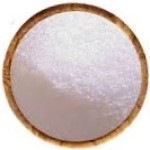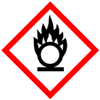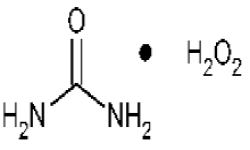CAS Number 124-43-6, Carbamide Peroxide or Urea hydrogen peroxide USP Grade Manufacturers Exporters







CAS Number 124-43-6, Carbamide Peroxide or Urea hydrogen peroxide Manufacturer Exporter
For Properties Specifications of Carbamide Peroxide or Urea hydrogen peroxide Click Properties, Specifications of Carbamide Peroxide or Urea hydrogen peroxide Manufacturer.
For Uses of aaa Click Uses of Carbamide Peroxide or Urea hydrogen peroxide Manufacturer.
For For SDS MSDS Sheet of Carbamide Peroxide or Urea hydrogen peroxide Click SDS Safety Data Sheet MSDS Sheet of Carbamide Peroxide or Urea hydrogen peroxide Manufacturer.
The Properties and Specifications of Carbamide Peroxide or Urea hydrogen peroxide:
Appearance: White crystals.
Melting point: 80C to 90C (decomposes) literature.
Relative density: 1.39
Solubility: Soluble in water.
Storage: 2C.
Carbamide Peroxide USP Grade:
CH6N2O3 --- 94.07
Urea, compound with hydrogen peroxide (1:1).
Urea compound with hydrogen peroxide (1:1) CAS 124-43-6
Carbamide Peroxide contains not less than 96.0 percent and not more than 102.0 percent of CH6N2O3.
Identification:
A: Mix 1 mL of a solution (1 in 10) of it with 1 mL of nitric acid: a white, crystalline precipitate is formed.
B: A solution of it (1 in 10) responds to the tests for Peroxide.
Assay: Transfer about 100 mg of Carbamide Peroxide, accurately weighed, to a 500-mL iodine flask with the aid of 25 mL of water, add 5 mL of glacial acetic acid, and mix. Add 2 g of potassium iodide and 1 drop of ammonium molybdate, insert the stopper, and allow to stand in the dark for 10 minutes. Titrate the liberated iodine with 0.1 N sodium thiosulfate, adding 3 mL of starch as the endpoint is approached. Each mL of 0.1 N sodium thiosulfate is equivalent to 4.704 mg of CH6N2O3.
The Uses of Carbamide Peroxide or Urea hydrogen peroxide:
Carbamide peroxide otic (for the ears) is used to soften and loosen ear wax, making it easier to remove. Carbamide peroxide, also known as urea-hydrogen peroxide, is a water-soluble, white crystalline solid compound consisting of hydrogen peroxide and urea. As it is a source of hydrogen peroxide, it can be found in disinfecting and dental bleaching products. It is used as a disinfectant and in dentistry for its teeth whitening effects.The MSDS-SDS Hazard Statement of Carbamide Peroxide or Urea hydrogen peroxide:
Carbamide Peroxide or Urea hydrogen peroxide SDS, Safety Data Sheet
MSDS 11-Mar-22
1. Product Identification
Product Name & Other Names: Carbamide Peroxide or Urea Hydrogen Peroxide.
CAS No.: 124-43-6
EINECS: EC Number: 204-701-4
Relevant uses and uses advised against (if any): Laboratory and Industrial Manufacturing
SUPPLIER: As per Letterhead.
2. Hazards Identification
GHS, Globally Harmonized System Classification in accordance with 29 CFR 1910
Classification according to Regulation (EC) No 1272/2008
Oxidizing liquids; Oxidizing solids Category 3, H272
Skin corrosion/irritation Category 1A, B, C, H314
Labeling according to Regulation (EC) No 1272/2008
GHS Label Elements  Oxidizing Solid |
GHS Label Elements |
Signal Word: Danger
Hazard Statements:
H272: May intensify fire; oxidizer.
H314: Causes severe skin burns and eye damage.
Precautionary Statements:
P210: Keep away from heat/sparks/open flames/hot surfaces. - No smoking.
P220: Keep/Store away from clothing/other combustible materials.
P221: Take any precaution to avoid mixing with combustibles.
P260: Do not breathe dust/fume/gas/mist/vapors/spray.
P264: Wash … thoroughly after handling.
P280: Wear protective gloves/protective clothing/eye protection/face protection.
P301+330+331: IF SWALLOWED: Rinse mouth. Do NOT induce vomiting.
P303+361+353: IF ON SKIN (or hair): Remove/Take off immediately all contaminated clothing. Rinse skin with water/shower.
P304+340: IF INHALED: Remove victim to fresh air and keep at rest in a position comfortable for breathing.
P305+P351+P338: IF IN EYES: Rinse cautiously with water for several minutes. Remove contact lenses, if present and easy to do. Continue rinsing.
P362: Take off contaminated clothing and wash before reuse.
P337+P313 If eye irritation persists: Get medical advice/ attention.
3. Composition/Information on Ingredients
Product Name & Other Names: Carbamide Peroxide or Urea Hydrogen Peroxide.
CAS No.: 124-43-6
EINECS: EC Number: 204-701-4
4. First Aid Measures
Always seek medical attention after first aid measures are provided.
Inhalation: Remove to fresh air. If not breathing, give artificial respiration. If breathing is difficult, give oxygen. Get medical attention.
Ingestion: Never give anything by mouth to an unconscious person. Get medical attention.
Skin Contact: Wipe off excess material from skin then immediately flush skin with plenty of water for at least 15 minutes. Remove contaminated clothing and shoes. Get medical attention. Wash clothing before reuse. Thoroughly clean shoes before reuse.
Eye Contact: Immediately flush eyes with plenty of water for at least 15 minutes, lifting lower and upper eyelids occasionally. Get medical attention immediately.
Note to Physician: Symptomatic and supportive treatment is recommended.
5. Fire Fighting Measures
Flammability of the Product: Non-flammable but it is an oxidizer.
Products of Combustion: It emits toxic oxides of nitrogen when heated to decomposition.
Fire: It is supporting fire as an oxidizer.
Explosion: Contact with oxidizable substances may cause explosion.
Fire Extinguishing Media: Use water spray, alcohol-resistant foam, dry chemical, or carbon dioxide. Use means suitable for extinguishing surrounding fire.
Extinguishing Media Not recommended: Avoid using solid water jet as it may scatter the fire.
Special Information: In the event of a fire, wear full protective clothing and NIOSH-approved self-contained breathing apparatus with full face piece operated in the pressure demand or other positive pressure mode. At elevated temperatures under fire conditions, it may produce toxic or irritating fumes. Fire-extinguishing work is done from the windward and the suitable fire-extinguishing method according to the surrounding situation is used. Uninvolved persons should evacuate to a safe place.
6. Accidental Release Measures
Personal precautions, protective equipment, and emergency procedures: Avoid breathing dust/fumes/gas/mist/vapors/spray. Use individual protective equipment (waterproof boots, suitable protective clothing, safety glasses, etc.). Prevent any contact with hot surfaces. Do not approach facing the wind.
Environmental precautions: Do not let the product enter drains, soil, or water sources.
Methods and materials used for containment cleanup procedures and Storage: Contain spilled material. Cover with an inert, non-combustible absorbent material, (e.g., sand, earth, diatomaceous earth, vermiculite). Do not let the product enter drains. Use a shovel to put the material into a convenient waste disposal container. Finish cleaning by spreading water on the contaminated surface and dispose as per legal requirement.
7. Handling and Storage
Precautions for safe handling: Apply according to good manufacturing and industrial hygiene practices. Ensure proper ventilation. Wash thoroughly after handling. Do not drink, eat, or smoke while handling. Avoid contact with skin, eyes, and clothing. Minimize dust generation. Avoid breathing dust/fumes/gas/mist/vapors/spray. Use individual protective equipment (waterproof boots, suitable protective clothing, safety glasses, etc.). Prevent any contact with hot surfaces.
Conditions for safe storage, including any incompatibilities: Store in cold, dry, and ventilated area away from heat sources and protected from sunlight in tightly closed original container. Keep air contact to a minimum. Do not leave the material container open. Store protected from heat, sparks and ignition sources and incompatible materials. Do not store with incompatible materials like organic substances, metal powders and reducing agents. Keep in a tightly closed container, stored in a cold (refrigerated), dry, ventilated area. Short term shipping may be at room temperature. Protect against physical damage or contact with combustible substances.
8. Exposure Controls/Personal Protection
Airborne Exposure Limits: None established.
Ventilation System: A system of local and/or general exhaust is recommended to keep employee exposures as low as possible.
Personal Respirators (NIOSH Approved): For conditions of use where exposure to dust or mist is apparent and engineering controls are not feasible, a particulate respirator may be worn.
Skin Protection: Wear protective gloves and clean body-covering clothing.
Eye Protection: Use chemical safety goggles and/or full-face shield where dusting or splashing of solutions is possible. Maintain eye wash fountain and quick-drench facilities in work area.
Other Control Measures: Maintain good housekeeping in work area. Handle in accordance with good industrial hygiene and safety practice. Wash hands after handling.
9. Physical and Chemical Properties
Appearance: White crystals or powder or granules.
Odor: Slight.
Odor threshold: No data found.
pH: No data found.
Relative density: 1.39
Melting Point: 80-90C (Decomposes)
Initial boiling point and boiling range: No data found.
Flash point: No data found.
Auto-ignition temperature: No data found.
Decomposition temperature: No data found.
Upper/lower flammability or explosive limits: No data found.
Vapor pressure: No data found.
Vapor density: No data found.
Evaporation rate: No data found.
Flammability (solid, gas): No data found.
Partition coefficient: n-octanol/water: No data found.
Solubility: Soluble in water.
Viscosity: No data found.
Molecular Weight: 94.07
Chemical Formula: CH6N2O3
10. Stability and Reactivity
Stability: It is stable under recommended conditions of use and storage.
Hazardous Decomposition Products: It emits toxic oxides of nitrogen when heated to decomposition.
Hazardous Polymerization: Will not occur.
Incompatibilities: Organic substances, Metal powders and Reducing agents.
Conditions to Avoid: Incompatibles and heat.
11. Toxicological Information
Toxicity to Animals: LD50 Oral: >2000 mg/kg (Rat).
Carcinogenicity: No component of this product present at levels greater than or equal to 0.1% is identified as probable or confirmed human carcinogen by IARC, ACGIH, OSHA and NTP.
Mutagenic Effects: No data found.
Teratogenic Effects: No data found.
Developmental Toxicity: No data found.
12. Ecological Information
Environmental Fate: No data found.
Environmental Toxicity: The material is not considered as environmental hazard.
Results of PBT and vPvB assessment: This substance/mixture contains no components considered to be either persistent, bioaccumulative and toxic (PBT), or very persistent and very bioaccumulative (vPvB) at levels of 0.1% or higher.
13. Disposal Considerations
Whatever cannot be saved for recovery or recycling should be managed in an appropriate and approved waste disposal facility.
14. Transport Information
DOT USA, TDG Canada & ADR/RID Europe
UN number: 1511 Class: 5.1 (8). Packing group: III
Proper shipping name: Urea hydrogen peroxide
Marine pollutant: No
IMO/IMDG
UN number: 1511 Class: 5.1 (8). Packing group: III
Proper shipping name: Urea hydrogen peroxide
Marine pollutant: No
ICAO/IATA
UN number: 1511 Class: 5.1 (8). Packing group: III
Proper shipping name: Urea hydrogen peroxide
Marine pollutant: No
15. Regulatory Information
USA:
SARA 311/312 Hazards: See section 2.
Section 16 - Additional Information
European Labeling in Accordance with EC Directives:
H272 = May intensify fire; oxidizer.
H314 = Causes severe skin burns and eye damage.
Classification according to EU Directives 67/548/EEC or 1999/45/EC
Hazard Symbols:
C Corrosive
O = Oxidizer
Risk Phrases:
R 8 Contact with combustible material may cause fire.
R34 Causes burns
R 41 Risk of severe damage to eyes.
Anmol Chemicals & Pharmaceuticals Pvt. Ltd. is an off-shoot of Anmol Chemicals Taloja. It is located in MIDC Taloja and it is manufacturing pharmaceutical grades of API, Excepients, Food grade and Reagent grade chemicals. Anmol Chemicals & Pharmaceuticals Pvt. Ltd. is a several decades old group of companies, engaged in manufacturing, supplying, distributing, wholesale supplies for actual users, retail or small pack supplies for research and development chemicals, fine and speciality chemicals, pharmaceutical excipients, mineral fortifiers in chemically pure, Analytical reagent grade, IP BP USP Ph Eur EP JP and other pharmaceutical grade monograph including FCC Food grade chemicals and Nutraceuticals, Mineral Fortifiers at best prices.

Carbamide Peroxide or Urea hydrogen peroxide
Structure
CAS Number 124-43-6, Carbamide Peroxide or Urea hydrogen peroxide Manufacturer Exporter
ANMOL CHEMICALS & PHARMACEUTICALS Pvt. Ltd.
India, USA, Europe, UAE
TELEPHONE: +912223770100
Navi Mumbai, INDIA
e-mail: info(At the rate i.e. @)anmol.org
Copyright. 3-may-25
We manufacture:
Glacial Acetic Acid Manufacturer


